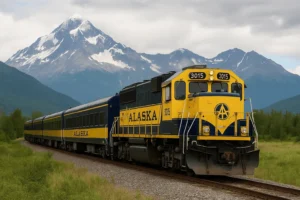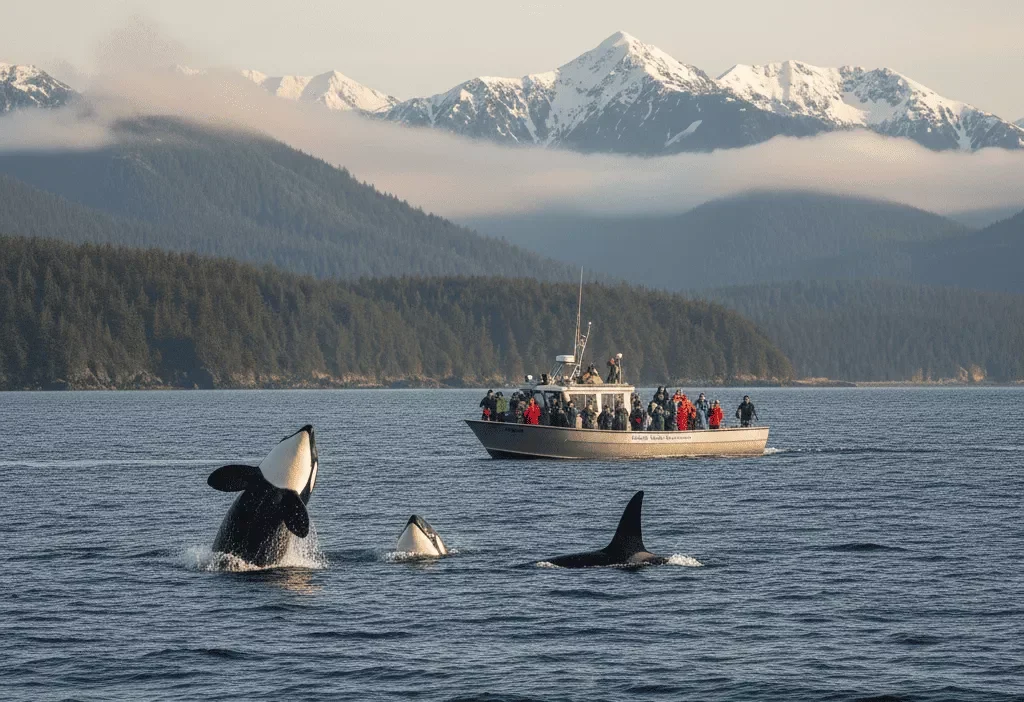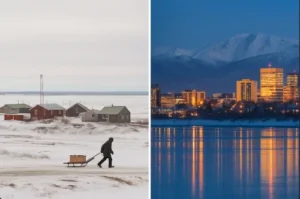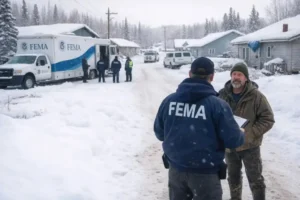Whale watching in Kodiak has become one of the most reliable marine wildlife experiences in Alaska, especially from May through September, when humpback whales, orcas, and gray whales move through the Gulf of Alaska.
Why Kodiak Island Is One of Alaska’s Best Whale Watching Destinations
Kodiak Island sits along nutrient-rich waters where strong ocean upwelling brings krill, herring, and salmon close to the surface.
This creates perfect conditions for the whales, including humpbacks that feed aggressively before migrating south.
Updated NOAA 2025 data shows:
- Humpback whale numbers in the Gulf of Alaska remain stable at approximately 2,800–3,000 individuals.
- Eastern North Pacific gray whales migrate past Kodiak in spring and fall, with approximately 14,500 individuals counted in the 2024–25 population assessment.
- Orca sightings are increasing, especially transient killer whales that follow seals and sea lions.
These numbers make whale watching unusually consistent compared to many other coastal regions.
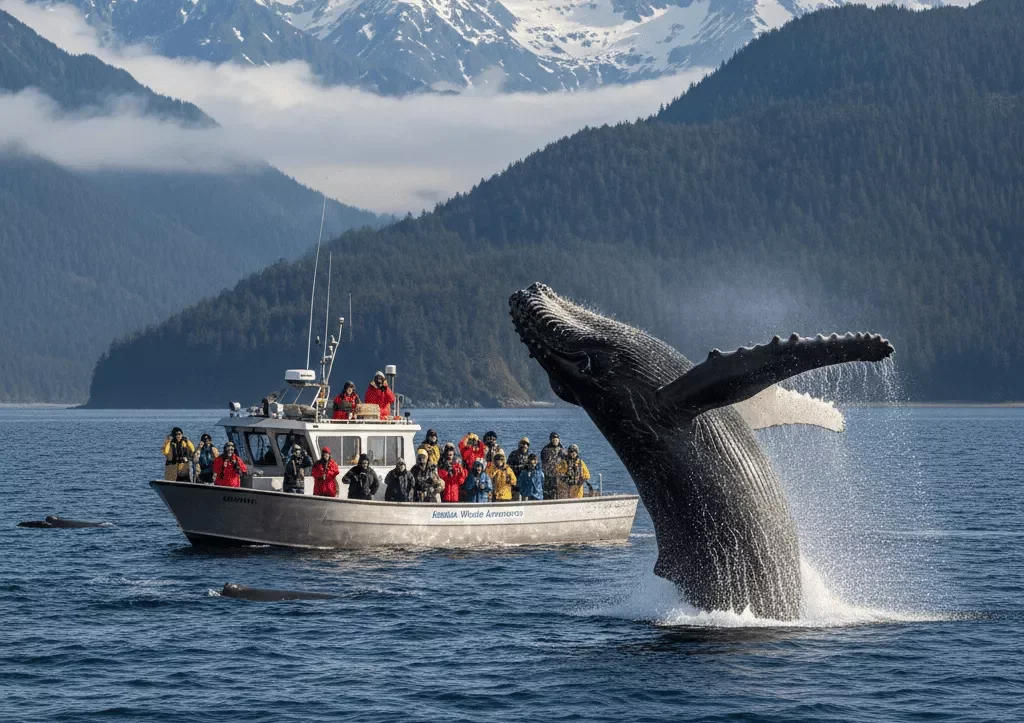
Best Months for Whale Watching in Kodiak
If you want to know “what is the best month to see whales in Alaska,” NOAA’s 2025 marine mammal calendar gives the clearest answer:
May to September – Peak Whale Watching Season (Kodiak Island)
- Humpback whales: Arrive by late May, peak in July and August.
- Orcas: Seen year-round, but most active May–September.
- Fin and minke whales: Common in the deeper channels around the archipelago.
- Gray whales: Pass through in April–May (northbound) and again in September–October (southbound).
Where to See Whales on Kodiak Island (No Tour Required)
Many travelers ask, “How to see whales in Alaska?” They want to know if shoreline viewing is possible.
In Kodiak, it absolutely is.
Top land-based whale watching spots:
Fort Abercrombie State Park
Deep channels near the cliffs make this the most reliable land-viewing place.
Narrow Cape (near Fossil Beach)
Humpbacks often feed close to the shore in late summer.
Chiniak Highway Viewpoints
A mix of wide ocean views and quiet coves, perfect for whale spotting.
These locations are included in many Kodiak wildlife photography tours because the angles and lighting conditions are ideal for marine wildlife shots.
Also Read: What is the Best Time to See Whales in Alaska?
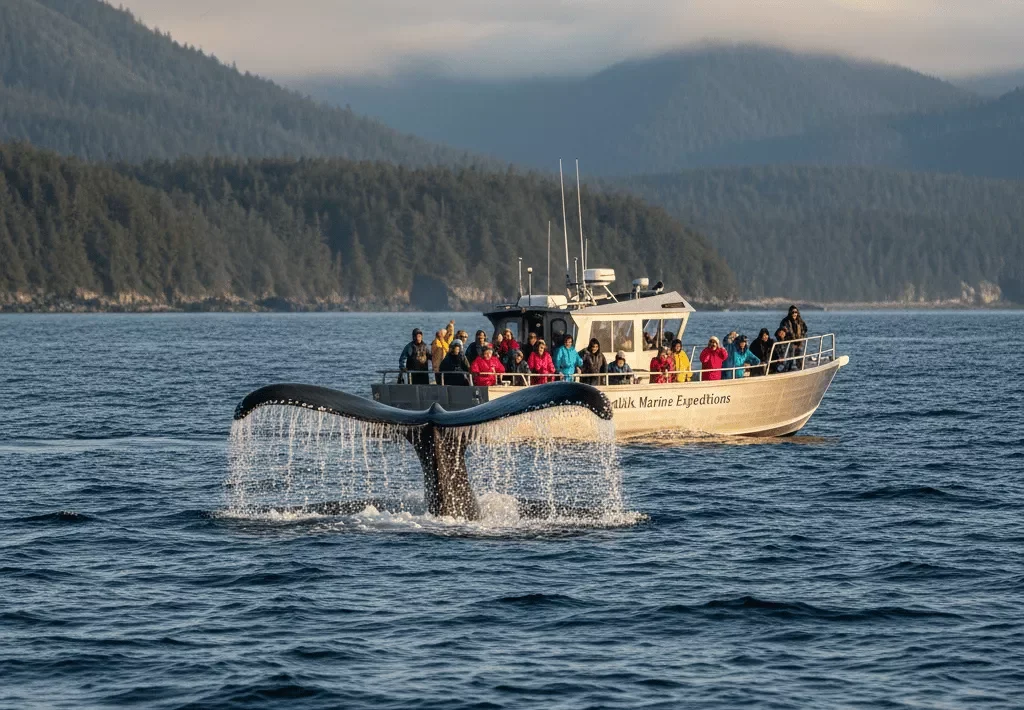
Whale Watching Tours in Kodiak, Alaska (2025 Options)
Although land-based viewing is possible, boat-based whale-watching tours offer closer encounters and higher success rates.
2025 Tour Options (General Overview)
These tours fall under several categories:
1. Kodiak Marine Wildlife Excursions
Half-day or full-day wildlife routes along Chiniak Bay and Ugak Bay.
Often include whale sightings plus puffins, sea otters, Steller sea lions, and coastal wildlife.
2. Alaska Coastal Tours
These explore deeper waters where humpbacks and fin whales feed.
3. Marine Mammal Tours Kodiak
Focused specifically on whales, porpoises, and seals.
4. Kodiak Wildlife Photography Tours
Guided by local naturalists who know the feeding grounds.

General Pricing Trends for 2025 (Based on Alaska marine tour averages):
- Half-day (4–5 hours): $180–$220 per person
- Full-day (6–8 hours): $250–$340 per person
- Private charters for photographers range from $900–$1,600, depending on vessel size.
Prices vary, but Kodiak is considered one of the more affordable Alaska whale watching trips compared to Juneau or Seward.
What Whales You Can See in Kodiak (Updated 2025 Data)

Humpback Whales
The highlight of most whale watching Kodiak Island trips.
NOAA reports humpbacks feeding 8–10 hours a day during July and August.
Orcas (Killer Whales)
Transient orcas are the most common around Kodiak, driven by sea lion and salmon populations.
Fin Whales
One of the fastest whales in the world, often seen offshore.
Fin whale sightings have increased slightly, according to 2024–2025 surveys.
Gray Whales
Migratory birds are seen mainly during April–May and September–October.
Minke Whales
Small and quick, often seen during calm sea conditions.
Also Read: Best Time to See Beluga Whales at Beluga Point
Why Kodiak Offers a More Natural Whale Watching Experience
Visitors often compare whale watching in Kodiak to Homer, Juneau, or Seward.
What makes Kodiak different:
Lower tourist crowds
More space and quieter waters.
Higher wildlife diversity
You’re not just watching whales
You’re also seeing:
- puffins
- sea otters
- seals
- porpoises
- bald eagles
- Steller sea lions
Authentic marine ecosystem
NOAA describes Kodiak’s archipelago as one of the richest marine zones in the Gulf of Alaska.
Tips for Whale Spotting in Kodiak
Easy and practical guidance for travelers:
- Early mornings offer calmer seas.
- Bring a 300mm lens for wildlife photography.
- Choose a clear-sky day for a longer viewing distance.
- Dress in layers. Kodiak wind is unpredictable.
- Stay 100 yards from whales, per NOAA regulations.
Also Read: Kodiak Crab Fest 2025: A Coastal Celebration Like No Other!
FAQs
What is the best month to see whales in Alaska?
July and August are peak months statewide, including Kodiak.
However, May–September offers consistent sightings on most whale-watching trips.
How to see whales in Alaska?
You can view whales from land at places like Kodiak’s Fort Abercrombie or join dedicated whale watching tours that operate from Kodiak, Seward, Juneau, and Homer.
Can you see whales in Alaska in winter?
Yes, orcas are present year-round in parts of the state, including around Kodiak, but winter whale sightings are far less frequent because humpbacks and gray whales migrate south. Winter conditions also limit tour operations, so most trips occur only in late spring through early fall.
Are whale watching tours in Kodiak safe for children?
Most operators welcome children and provide life jackets sized for different age groups. Conditions in Kodiak’s waters can be windy, so families should choose larger, more stable vessels and book morning departures when seas are typically calmer.
How close do whale watching boats get to whales in Alaska?
Boats must follow NOAA’s 100-yard distance rule to protect both whales and passengers. Exceptions occur only when whales approach the vessel voluntarily, especially curious humpbacks or porpoises that may surface near the boat.
What time of day is best for whale watching in Alaska?
Morning departures often offer the best visibility because winds are lighter and the sea surface is calmer before afternoon gusts begin. Calm water makes it easier to spot blows, tails, and dorsal fins at long distances.
Is whale watching better in Kodiak or Seward?
Seward offers more tour operators and nearly guaranteed humpback sightings in summer, while Kodiak provides a wilder, less crowded experience with a higher chance of seeing orcas, sea lions, puffins, and marine wildlife together. Travelers looking for “raw Alaska nature” often prefer Kodiak’s quieter waters.


